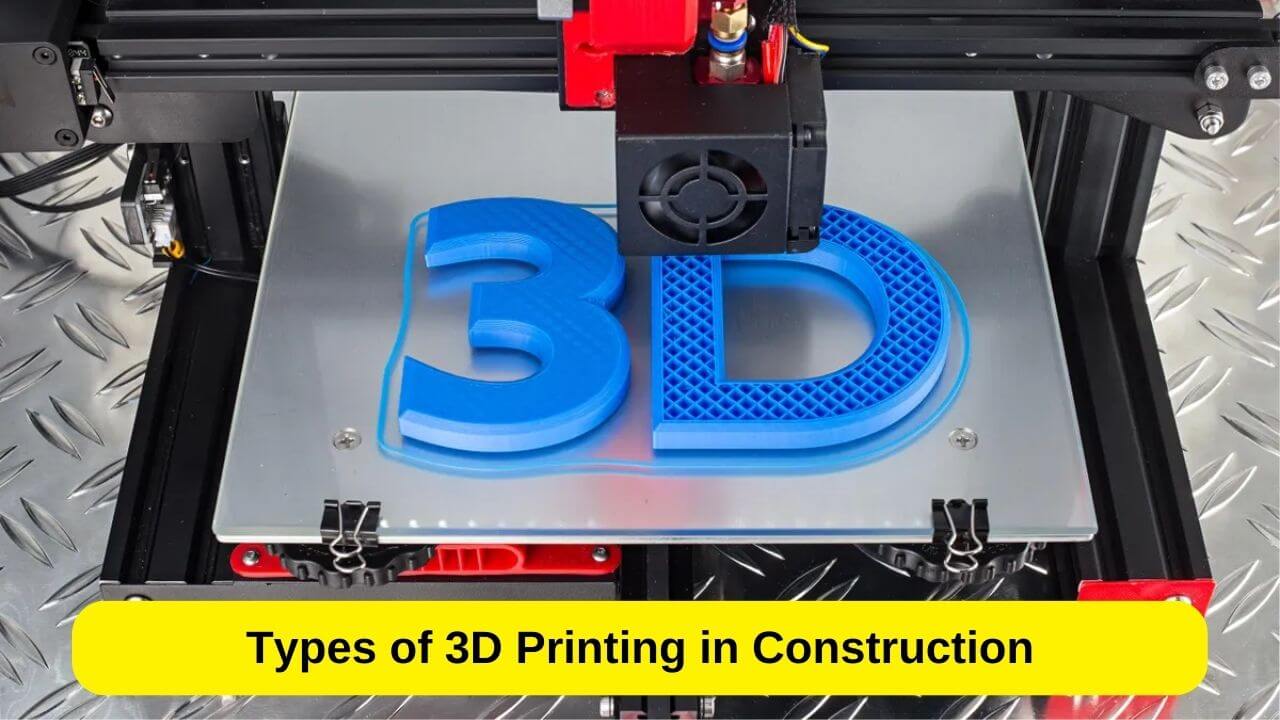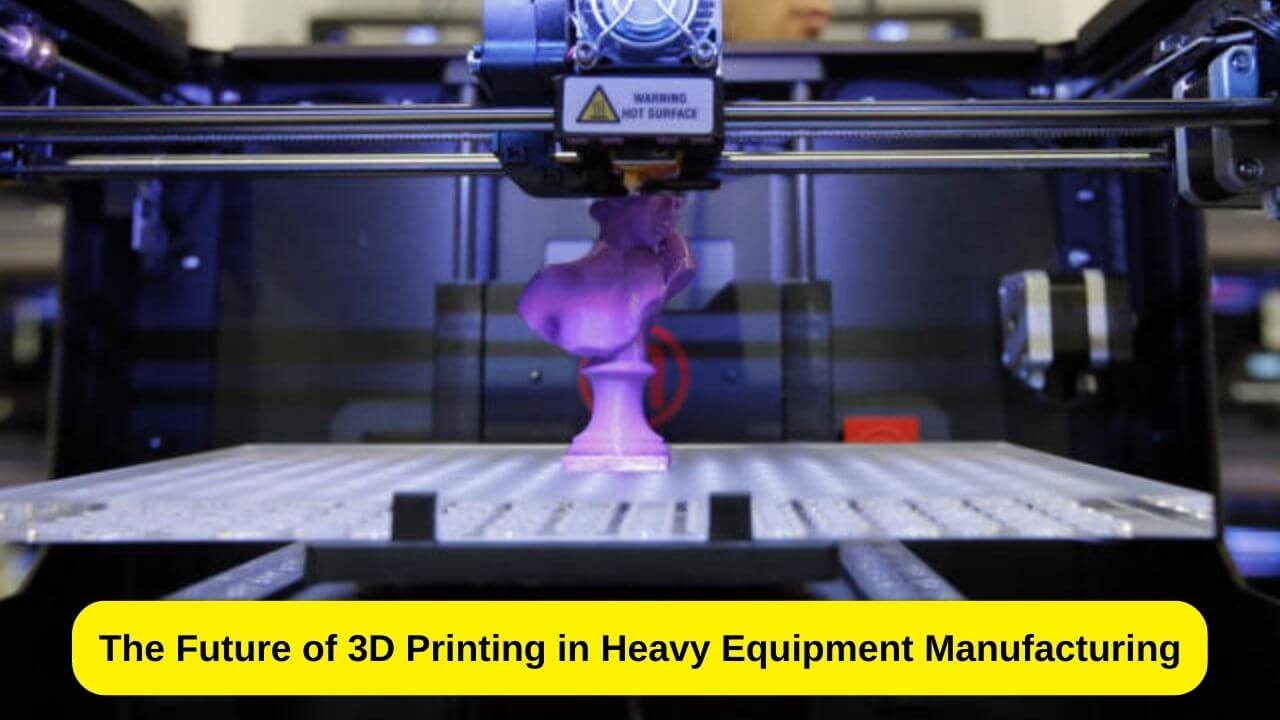The Future of 3D Printing in Heavy Equipment Manufacturing – 3D printing, also known as additive manufacturing, is a process of creating three-dimensional objects by adding material layer by layer based on a digital design.
In heavy equipment manufacturing, 3D printing involves the use of this technology to produce various components, parts, and even entire equipment using specialized 3D printers.
The application of 3D printing in heavy equipment manufacturing brings several advantages, including increased design flexibility, reduced lead times, improved customization, enhanced performance through optimized designs, and the potential for cost savings in certain scenarios
As the technology continues to advance, the adoption of 3D printing in heavy equipment manufacturing is expected to grow, enabling manufacturers to overcome traditional limitations and explore new possibilities in design, production, and sustainability.
Let’s find out more about The Future of 3D Printing in Heavy Equipment Manufacturing in this article!
Types of 3D Printing in Construction

In construction, there are several types of 3D printing techniques that can be used.
Each technique has its own advantages, limitations, and applications.
Here are some common types of 3D printing in construction:
Contour Crafting
Contour Crafting is a large-scale 3D printing technique specifically developed for construction.
It uses a gantry system with a robotic arm to extrude layers of concrete or other construction materials in a precise pattern.
Contour Crafting is capable of constructing walls, floors, and other structural elements quickly and accurately.
Concrete Extrusion Printing
Concrete extrusion printing, also known as concrete 3D printing or concrete additive manufacturing, involves the layer-by-layer deposition of concrete using a robotic arm or gantry system.
It utilizes specially formulated concrete mixes that can flow through a nozzle or extruder.
This technique is commonly used for printing walls, facades, and other concrete-based structures.
Powder Bed Fusion
Powder Bed Fusion is a 3D printing technique commonly used in metal construction.
It involves spreading a thin layer of metal powder and then selectively fusing it using a heat source, such as a laser or electron beam, to create the desired shape.
This technique is suitable for producing metal components with high strength and precision.
Binder Jetting
Binder Jetting is a 3D printing technique that involves the deposition of a binder material onto a powder bed, layer by layer, to create the desired object.
The binder acts as an adhesive, bonding the particles together.
This technique can be used with various materials, including sand, gypsum, and metals.
It is often employed for creating detailed architectural models or prototypes.
Robotic Construction
Robotic construction involves the use of robotic arms equipped with specialized end-effectors to perform construction tasks.
These robots can be programmed to perform various construction processes, such as laying bricks or blocks, applying mortar, or placing reinforcement.
Robotic construction is a versatile technique that can be used in conjunction with other 3D printing methods.
Sintering
Sintering is a process in which powdered materials, such as ceramics or metals, are fused together under high heat and pressure.
It is commonly used in the construction industry to produce ceramic components or complex metal parts with high strength and durability.
Read More: The Impact of Electric Heavy Equipment on Sustainability
The Future of 3D Printing in Heavy Equipment Manufacturing

The future of 3D printing in heavy equipment manufacturing holds significant potential for revolutionizing various aspects of the industry.
Here are some key developments and possibilities that could shape its future:
Customization and Complexity
3D printing enables the creation of highly customized and complex parts with intricate designs that are difficult or costly to produce using traditional manufacturing methods.
Heavy equipment manufacturers can leverage this technology to produce parts tailored to specific requirements, leading to improved performance and functionality.
Reduced Lead Times
3D printing can significantly reduce the time required for producing heavy equipment components.
By eliminating the need for complex tooling and reducing assembly processes, manufacturers can accelerate production cycles and respond more quickly to market demands.
Lightweight and Optimized Designs
Heavy equipment often requires durable yet lightweight components to enhance fuel efficiency, maneuverability, and overall performance.
With 3D printing, manufacturers can employ advanced design techniques such as topology optimization to create parts that are both lightweight and structurally optimized, resulting in improved efficiency and reduced material waste.
On-Demand Spare Parts
Heavy equipment downtime due to broken or worn-out parts can be costly and time-consuming.
3D printing offers the ability to produce spare parts on demand, eliminating the need for large inventories and reducing lead times for replacements.
This can enhance equipment uptime and reduce maintenance costs.
Material Advancements
Continued advancements in 3D printing materials will expand the range of options available for heavy equipment manufacturing.
For example, the development of high-strength metal alloys and composite materials suitable for 3D printing can open up new possibilities for producing critical components with improved strength and durability.
Increased Collaboration
3D printing can facilitate collaboration among heavy equipment manufacturers, suppliers, and customers.
Digital files of 3D-printable parts can be shared easily, allowing for remote production and enabling global supply chains.
This collaboration can foster innovation, streamline logistics, and create new business models.
Sustainable Manufacturing
3D printing has the potential to contribute to more sustainable manufacturing practices in heavy equipment production.
By reducing material waste, optimizing designs for lightweight structures, and enabling local production, 3D printing can minimize the environmental impact associated with traditional manufacturing methods.
Advanced Testing and Prototyping

3D printing enables rapid prototyping and iterative design processes.
Heavy equipment manufacturers can leverage this technology to produce functional prototypes, conduct testing, and gather feedback more efficiently.
This iterative approach can lead to better designs, improved performance, and reduced time-to-market.
Read More: 9 Tips of Choosing the Right Earthmoving Equipment
Conclusion
In conclusion, 3D printing has the potential to revolutionize the construction industry by offering numerous benefits.
The ability to rapidly construct buildings and structures, along with cost savings and design flexibility, are some of the key advantages of 3D printing in construction.
Techniques such as Contour Crafting, concrete extrusion printing, powder bed fusion, binder jetting, robotic construction, and sintering are among the common types of 3D printing used in construction.
By leveraging these technologies, construction projects can be completed faster, with reduced labor costs and enhanced customization.
Complex designs and customized structures can be easily realized, allowing architects and designers to push the boundaries of creativity.
Additionally, 3D printing in construction promotes sustainability by optimizing material usage, minimizing waste, and reducing transportation needs.
However, it’s important to acknowledge that the field of 3D printing in construction is still evolving, and challenges remain, such as the need for standardized regulations, scaling up production, and improving the mechanical properties of printed structures.
Nonetheless, as the technology continues to advance and gain wider adoption, it holds great promise for transforming the construction industry and shaping the future of building design and construction processes.
